By Giedre Trumpiene
Hello! This is Giedre. I am continuing my non-traditional tea brewing methods and tools adventure! In case you have missed my previous tea brewing experiments click here: brewing with Siphon and brewing with Chemex. This week I would like to review three different cold brew methods.
Cold or ice brew tea is quite well known in Japan but it is getting more and more attention all over the world. It is not just a healthy drink for hot, humid summer days, but also a great way to appreciate the Japanese tea flavours and quality. Green tea brewed in cooler temperatures, usually between 0 and 20 C, has a lower extraction rate of catechin and caffeine into the water, therefore tea is much less bitter and astringent than green tea brewed in hot water. Tastes of amino acids (Theanine) predominate in cold-water brewed green tea because they are extracted easier in cold water, so it results in sweeter, umami flavoured tea. To discover the very best favours I performed three different cold infusion trials with a really special tea – Heavenly Drop Gyokuro.
Cold brew – mizudashi
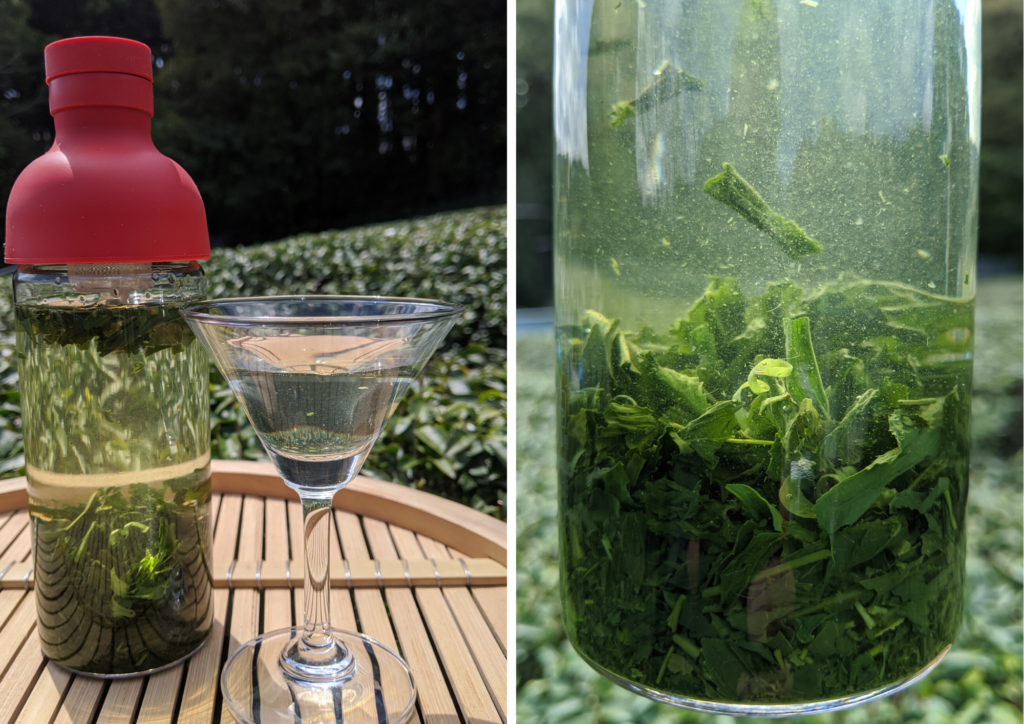
Mizudashi is a cold tea brewing method, where only cold water is used and brewing takes as long as 4-6 hours. It is a really easy way to make a cold, refreshing drink – tea leaves can be left overnight to be enjoyed the next day. It is also a great way to reuse your tea leaves that were used for hot tea infusion!
Usually sencha or hojicha is used for this type of cold brew, but in order to make the comparison of all different types of ice/cold brewing easier, I used gyokuro tea. To make a cold brew tea I used 5 g of Obubu’s gyokuro for 350 ml of good quality water. Tap water quality here in Wazuka is really good so I was able to use that, but you can also use bottled water, or regular, but boiled and cooled water. My brew stayed in the fridge overnight and next morning I was able to enjoy my little heavenly drop of gyokuro. As you can see in the photos, the colour of the liquid is slightly green with little tea leaf hairs floating around. Aroma is light and sweet with grassy notes. While the taste is quite different from the usual gyokuro hot infusion, it is definitely as good – light umami and refreshing cucumber notes with sweetness at the end make it a great treat for a hot summer day.
Tea over ice cubes
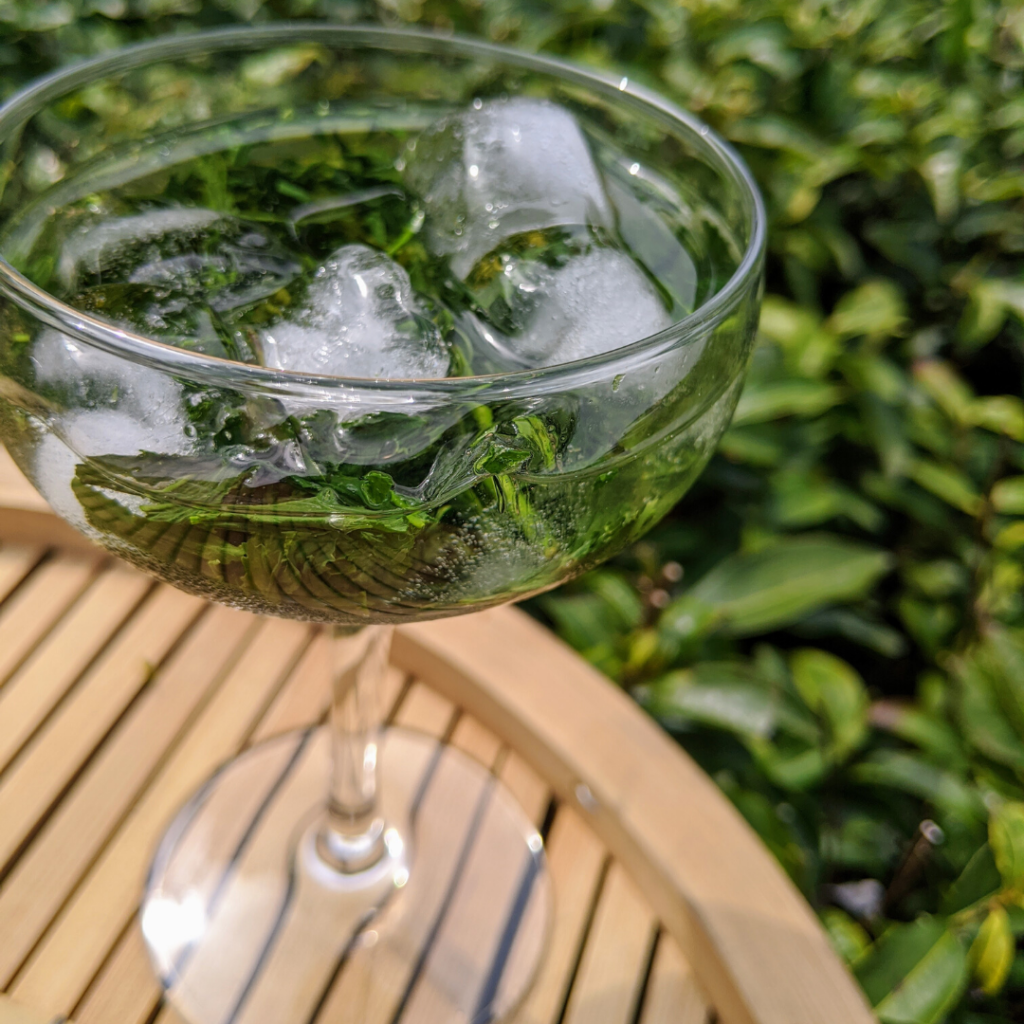
Another cold brew method discovered in Japan is tea over ice cubes. It’s usually done by simply using kyusu teapot, but here in Obubu we add a special twist to it by using a Martini glass instead, which allows us to observe the beauty of the slow fusion of melting ice and tea. It definitely looks amazing! Click here for a video. To make a glass of gyokuro over ice I used 2,5 g. of tea and 3 middle sized ice cubes. Ice took about 2h to fully melt, but it was worth the wait! The result, again, was quite different from your regular hot brew gyokuro. Color was a bit cloudy green, aroma was sweet and grassy and the taste was very refreshing with a bit of sweetness and umami flavour. A very special little treat for gyokuro lovers.
Ice drip
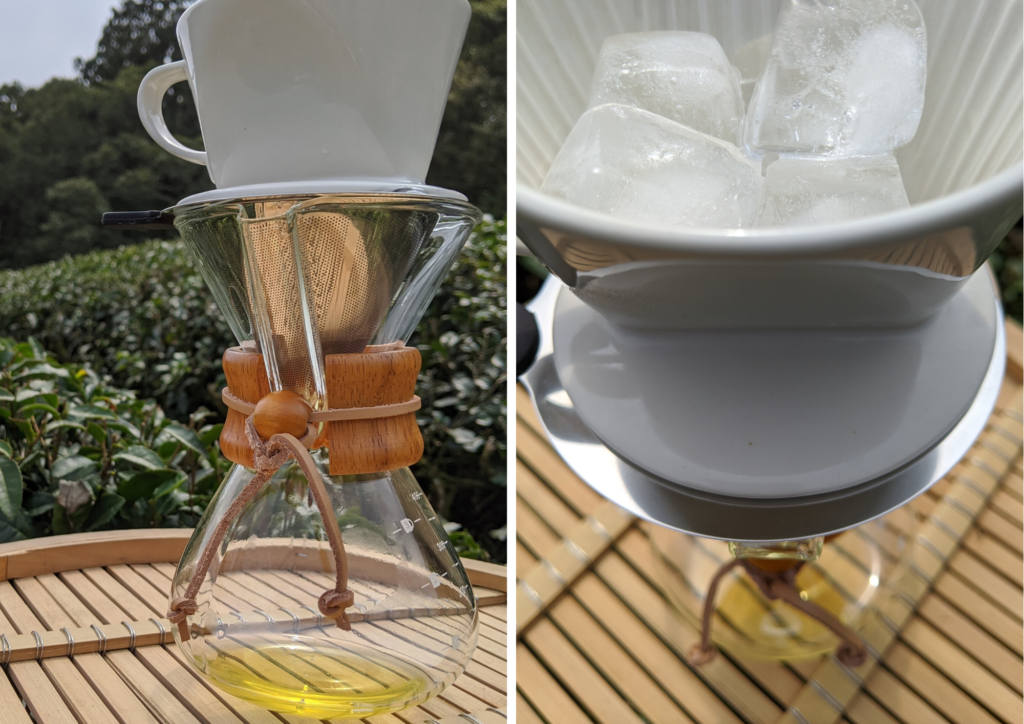
This method came from the coffee world. How does an ice drip brewer work? The top part of the brewer is filled with ice or ice and a cold water mix. Ice drip brewer comes with a dripper mechanism which lets us adjust the rate of icy water drops – it can go as fast as 1-2 drops per second. These icy water drops then fall into an infuser filled with tea where it extracts the flavour, and this infused tea immediately runs down to the pitcher at the bottom of the drip brewer. This is a really long tea brewing process and it is quite different from the “tea over ice” method – water and tea infusion time is quite a bit shorter which of course leads to a different tea flavour.
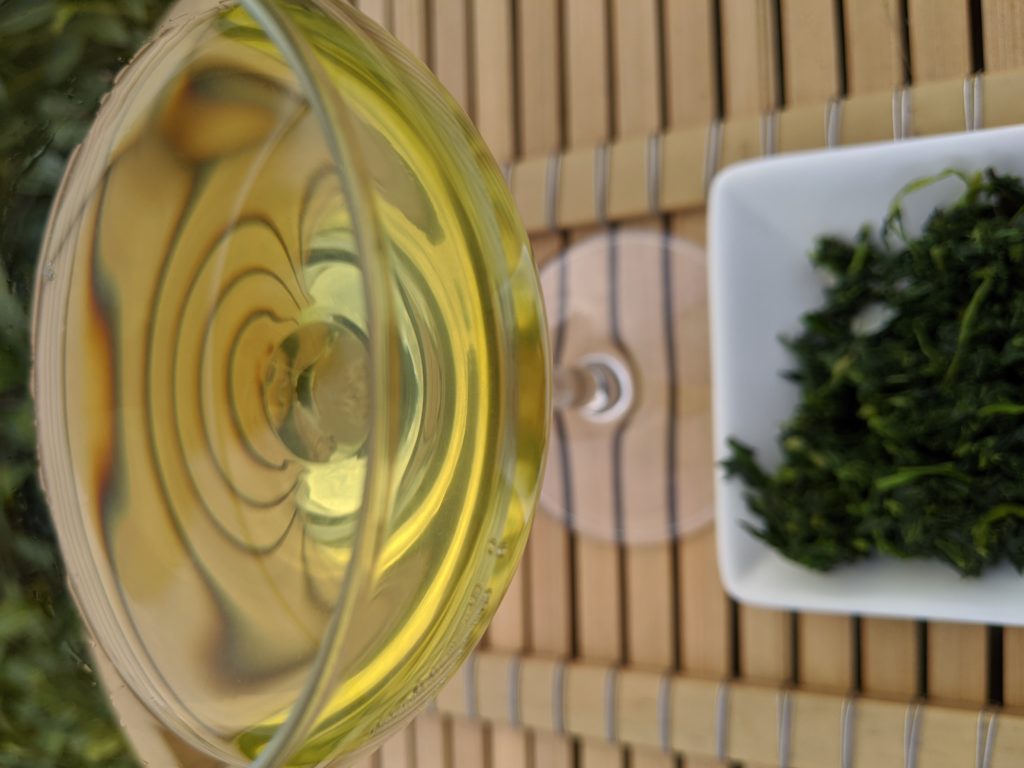 To perform the ice dripper experiment I had to improvise and make my own dripper with what was available at the time. I used a ceramic V60 brewer with three holes for ice at the top, stainless steel cone infuser for tea leaves and Chemex for tea at the bottom. The only disadvantage of this homemade dripper is that I could not adjust the rate of drips, but fortunately the fixed rate was fine and it did the job just great!
To perform the ice dripper experiment I had to improvise and make my own dripper with what was available at the time. I used a ceramic V60 brewer with three holes for ice at the top, stainless steel cone infuser for tea leaves and Chemex for tea at the bottom. The only disadvantage of this homemade dripper is that I could not adjust the rate of drips, but fortunately the fixed rate was fine and it did the job just great!
I used 5 g. of gyokuro and 7 mid-size ice cubes for the brew and it took about 4.5 h to brew about 80 ml of ice drip gyokuro. Again, it’s a long process but definitely worth the time!
Because the ice dripper method drastically reduces the contact between water and tea leaves, after infusion tea leaves were still dry and not fully opened. Tea liquid was concentrated and had a different flavour profile than the previous ice brews. The liquid colour was clear and aromatic. I enjoyed the flavour a lot – it had a rich, strong umami taste and at the same time had a balanced sweetness flavour.
All of cold/ice brew methods produced very different results. Cold brew is a great way to make a refreshing daily cup of tea, while ice drip and tea over ice cubes are more complex preparation methods and produce uniquely flavoured tea brews. I really enjoyed a refreshing glass of tea over ice cubes brew of gyokuro, but my personal favourite was ice drip because I am a big fan of umami.
We’ve reached the end of my little adventure of exploring different tea brewing methods. I have learned a lot along this journey and I hope that you did as well! I believe that making a great cup of tea with well-known teaware is as important as experimenting with the modern and exploring for the new brewing techniques.
Related articles:
Non-traditional Tea Brewing Methods And Tools I Part II – Brewing With Chemex
Non-traditional Tea Brewing Methods And Tools I Part I – Brewing With Siphon

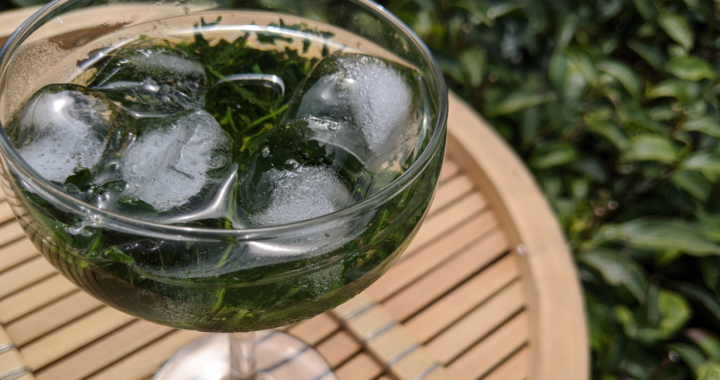
I love using “used” tea leaves for cold brew! Today I wanted some cold tea fast (it’s hot here in Texas!) so I made iced tea by steeping some sencha (Autumn Moon) at double strength and then pouring it over ice. Now the same leaves are cold brewing in the fridge, so I can have tasty and refreshing cold sencha waiting for me tomorrow, too!
I’ll have to try it with gyokuro next time!
great idea.